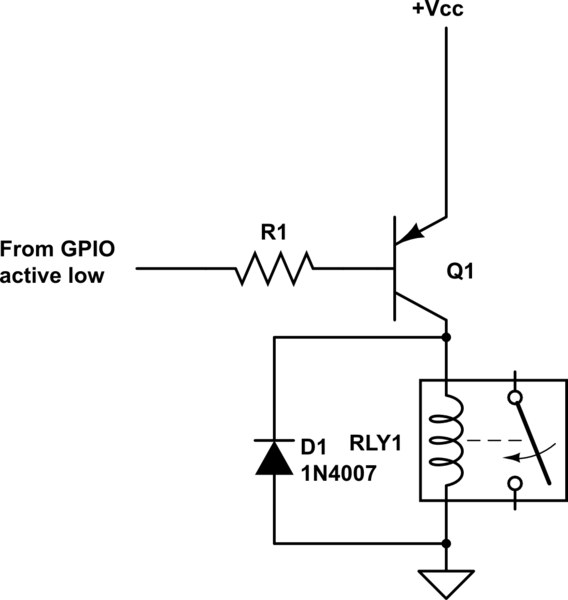I need high side switch for 3V relay (exactly RM40-3021-85-1003 with 45ohm coil -> need ~65mA). I have multiple VL53L1X (ST's ToF distance sensor, 2V8 logic levels) connected with theirs OC GPIO outputs ("INT") to one common wire. Normally the common wire high (2V8) all the time, but when any of the sensors trigger (something comes closer than distance limit) - the common wire logic level goes from 2V8 down to 0V (VL53L1X open collector outputs are active low, so, this is why I can't use low side switch).
Is it possible to solve this by only one PNP? (+resistor+flyback) And not using aditional NPN as suggested in question here...
The GPIO output of the sensor has level 2V8 (as sensor is powered by 2V8 LDO on PCB, can't be changed to 3V3 in this situation). But the 3V relay (emitor of PNP) is powered by 3V3 source (no 2V8, nor 5V supply possible). Its only 0,5V difference, is it secure to do it simply like this circuit:
 or by adding a diode to base to prevent "highside switch fail"?
or by adding a diode to base to prevent "highside switch fail"?
Please can you also give me exact values of all parts (resistors, PNP number, diode 1N4148?) as I need something very reliable for many years of lifetime and yet simple (I thought the more parts the more to fail during time), as I'm good in ESP and PIC (SW+HW), but not that good in bipolar transistor simulation... (The result device must be very secure to stop moving parts before a human may be hurt. It's HW backup solution if the SW stop fails.) Thanks.

